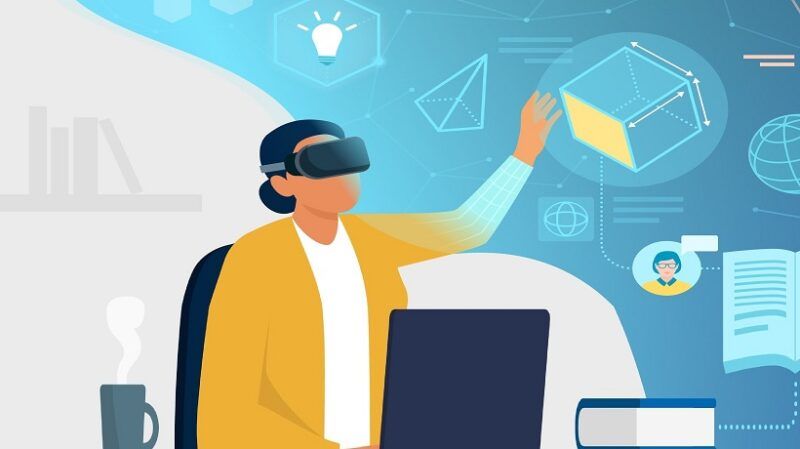
Innovative Pedagogy And The AI-Powered Metaverse
It is already a well-known fact that there is no one-size-fits-all when it comes to learning. Given all the existing opportunities the booming EdTech sector enables, why is the level of personalization still restricted and, in many cases, predefined by a suite of courses or by set-in-stone learning paths?
Everyone Learns Differently
Brain researchers claim that every individual has different levels of neuroplasticity which leads to countless learning behaviors and preferred styles of learning. In our fast-paced world, learning needs to be more and more efficient, enabling swifter adoption of new knowledge. This is particularly important if we take into consideration the findings of various studies, all concluding that one job occupation might not be enough to stay attractive in the future job market. So how can we create top-notch customized learning experiences, which combine the right pedagogical approach with making the most of emerging EdTech tools?
How Can The Appropriate Pedagogical Approach Stimulate Learning Personalization?
Following the mix and match approach, allow your learners to customize their learning experience, giving them the opportunity to:
1. Choose A Topic Of Their Interest
Rather than offering a fixed suite of courses, let the learner be the professor in creating their own curriculum. Naturally, suggestions on which courses could be the right fit to achieve the desired goal (like becoming a Python coder) will be highly appreciated and are often necessary.
2. Choose The Proportion Of Theory And Practice
Do not present courses as static items that can’t be modified. Allow learners to choose the proportion of theory and practice they want. Given the trend of microlearning, if you develop your training material as short nuggets, it should give learners the flexibility to mix their preferred amount of theory with practical exercises.
3. Choose The Percentage Of Interactivity And Exercises
Some people do prefer to discuss and practice newly adopted knowledge with other peers, hence give them the freedom to incorporate more social interaction and groupwork into their learning. On the contrary, there are also individuals who learn better on their own and shouldn’t be forced to participate in discussion forums or group assignments.
4. Choose An Instructor From An Existing Pool Of Experts
If there are many instructors delivering the same course, let the learner choose the one they identify most with, based on their experience, teaching methods, etc. Several studies show that if the student connects with the teacher, engagement and learning commitment increases.
To sum it up, giving your learners the freedom to set up their own courses with an instructor of their choice enables them to create their learning journey as they see fit. A positive element of this approach is to put your learners at the center of their learning experience without having to make a huge investment in new technology.
How Can New Technology Enhance The Personalization Of Future Learning?
Perhaps many of us have yet not had a chance to incorporate Virtual Reality (VR), Artificial Intelligence (AI) or the metaverse into our learning practice, but it is worthwhile to know their potential and keep an eye on their development.
1. AI Virtual Coach
An AI-powered virtual coach could be a nice unintrusive start to introduce AI into your learning platform. AI bots have several useful features for augmenting personalization such as:
- Recommending relevant content
They can suggest further content to learners, based on their training history. - Analyze learner behavior
They can keep track of learners’ preferences by evaluating learner metrics and patterns. - Availability 24/7
They are always able to respond to learners’ questions, however, they may not always have the right answer…
2. Metaverse
- What is the metaverse?
The metaverse is a virtual 3D extension network of the internet as we know it. It offers its users vast opportunities in terms of real-time interactions in virtual worlds, allowing them to create an online environment of their choice. Future metaverses are expected to fully adopt and embrace VR and AI creating a genuine virtual world. Many experts claim such augmented virtual learning experiences are highly likely to surpass traditional classroom tell-and-test learning methods, by introducing highly immersive learning experiences, leading to more engagement, customization, and greater effectiveness of learning. - The potential of the metaverse for learning
Compared to a simple online course, in the metaverse, students will be able to interact directly in virtual classrooms and workshops with lifelike characters, instead of talking to each other through a screen. - Multilingual learning content
Another highly regarded benefit of AI in a metaverse learning space is the possibility to localize and deliver real-time translated training content into any language of the learner’s choice. This fact allows for greater personalization, breaking down language barriers. Combined with an AI virtual coach monitoring learners’ activities we can expect to see extensive progress in the customized approach to learning, addressing each student’s individual needs.
Extraordinary Personalization Awaits
It seems rather inevitable—we must keep an eye on the metaverse and its evolving potential in learning. Some educational providers have already formed important partnerships with leading metaverse players (such as EdX, Coursera partnership with Meta—the recently rebranded Facebook), and the first virtual learning platforms are being developed in immersive metaverse environments.
